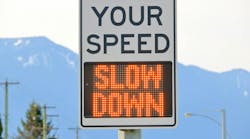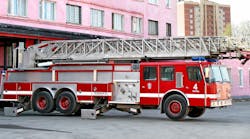Speed Limiters May Be Coming to All Vehicles Near You
Recent digital advancements in the industry have put a brighter light on traffic safety. For example, there are infrared thermal imaging and sensing systems being developed for nighttime driving that would instruct the driver to either slow down or stop before a collision occurs. Coupled with the ongoing advancements of Elon Musk's self-driving cars, it seems more necessary than convenient.
Now a not-so-new technology is being urged to be promoted and implemented by the Insurance Institute for Highway Safety (IIHS) and other members of the Road to Zero Coalition—a group committed to reducing traffic fatalities to zero by 2050. The coalition is led by the National Safety Council.
The technology in question is intelligent speed assistance (ISA) and speed limiters to help curb speeding which has recently contributed to a spike in traffic deaths since 2020, according to IIHS.
“Speeding causes more than a quarter of all crash deaths every year, accounting for more than 12,000 lost lives in 2021,” said Jessica Cicchino, vice president of research at IIHS. “In-vehicle technologies can be an important part of the solution.”
Intelligent speed assistance uses a camera to read posted speed signs or GPS mapping software to identify the speed limit and then alerts drivers when they're going too fast. Some systems are able to discourage speeding more aggressively by automatically reducing power to the engine once the driver crosses the limit.
This isn't just an idea as these systems are already required for all new vehicles in the European Union starting this year.
For all U.S. drivers, the coalition’s Accelerating Technology Working Group recommends warning-based, or “advisory,” ISA systems as a starting point for automakers. For commercial operators and public fleets, the coalition recommends promoting ISA or speed limiters, which prevent the vehicle from exceeding a preset maximum speed. Some organizations already use at least on of these technologies. The goal is to increase the number of fleets that embrace the technologies as well as civilian drivers.
IIHS will also recommend that the National Highway Traffic Safety Administration sets performance standards for ISA technology that at least provides a warning when the vehicle exceeds the speed limit, require all new vehicles to be equipped with ISA, and add an ISA evaluation to the New Car Assessment Program.
The working group also recommended steps to promote both technologies for high-risk groups like repeat speeding offenders and teen drivers. Teens are more likely than any other age group to be speeding when they are involved in a crash. Cars driven by repeat speeding offenders and teens could be equipped with aftermarket ISA systems that reduce power to the engine. Smartphone apps and in-vehicle systems that warn drivers when they exceed a preset speed could also help curb teen speeding.













